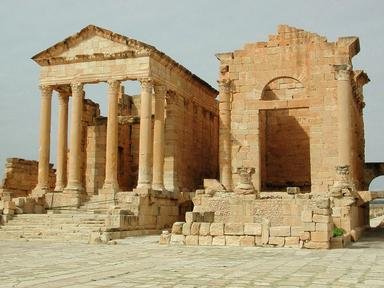Quiz Answer Key and Fun Facts
1. Tall prehistoric hunters who lived in the Green Sahara 10,000 years ago
2. Spiritual residents of Gobero approximately 4600 BC
3. Expert archers who lived in Sudan 2000 BC
4. Founders of one of the Cradles of Civilization
5. Seafarers who created trading network across the Sahara
6. Indigenous Amazigh peoples of the Maghreb
7. "Blue skin" descendants of Berbers
8. Urban dwelling Berbers in southern Libya
9. Centered in Niger and Nigeria, farmers and traders
10. Western African caravan traders and empire builders
Source: Author
ponycargirl
This quiz was reviewed by FunTrivia editor
bloomsby before going online.
Any errors found in FunTrivia content are routinely corrected through our feedback system.
